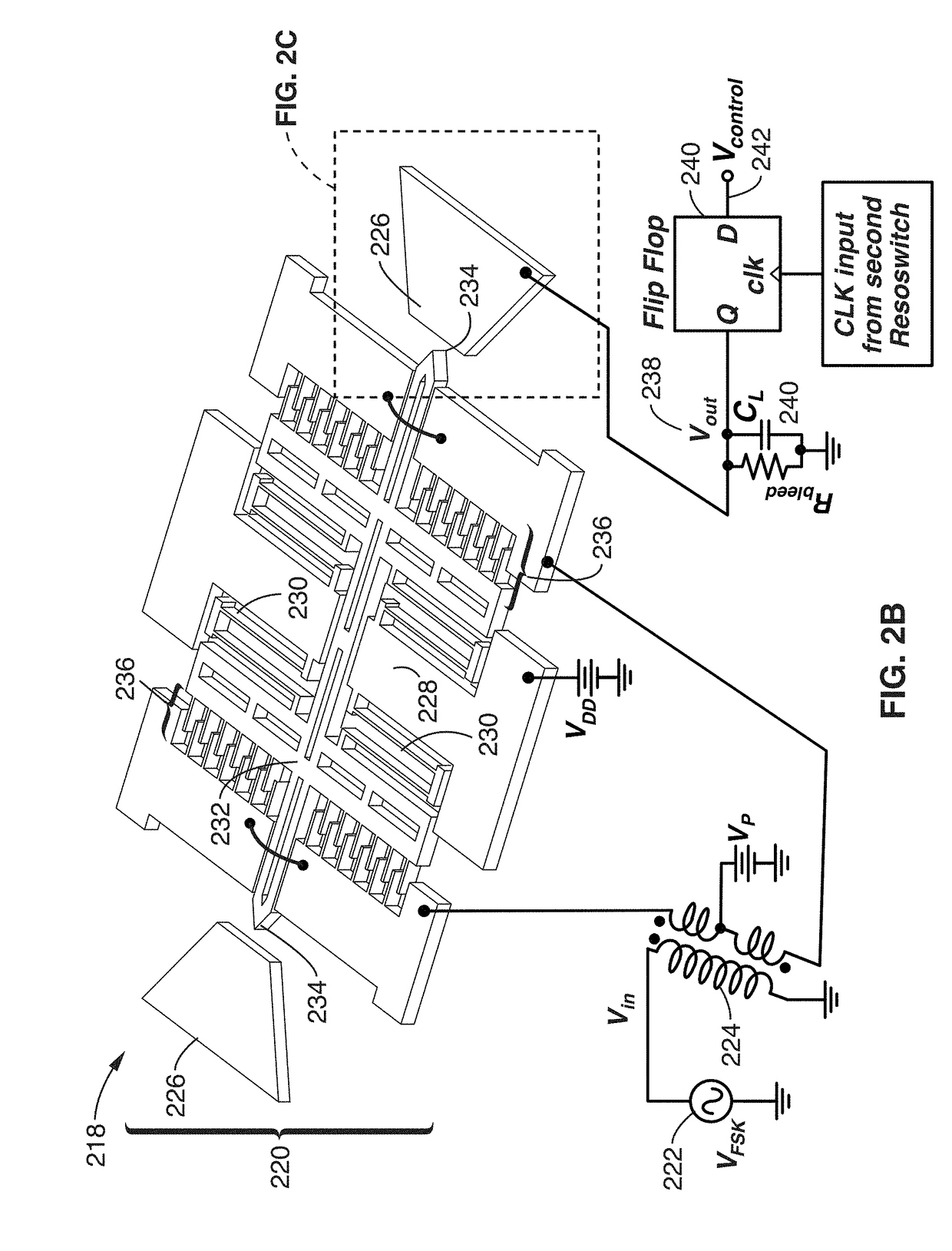Zero-quiescent power receiver
a power receiver and zero-quiescent technology, applied in power management, relays, high-level techniques, etc., can solve the problems of energy likely to pose a major constraint, and the power dissipation in such instances may be driven significantly, so as to improve short-range communication applications and significant near-term effects
- Summary
- Abstract
- Description
- Claims
- Application Information
AI Technical Summary
Benefits of technology
Problems solved by technology
Method used
Image
Examples
Embodiment Construction
1. Overview
[0086]This disclosure describes a method and an apparatus for realizing a trigger sensor and transceiver based on a microelectromechanical resonant switch that can listen for valid inputs while in standby without the need for DC power consumption. This sensor / transceiver is unique in its use of a resonant switch (“resoswitch”) to receive an input, amplify it, demodulate it, and finally deliver power to a load. During this process, power is consumed only when a valid input signal within the passband of the resonant element actuates the structure with sufficient amplitude to cause switch impacting. This means zero quiescent power is needed, i.e., no power needed while listening in standby.
[0087]This device differs from conventional RFID tags in its much smaller power threshold needed to detect and receive a signal. In particular, a typical RFID tag requires enough power input to not only deliver the desired information, but also to power up its active circuits. This is norm...
PUM
 Login to View More
Login to View More Abstract
Description
Claims
Application Information
 Login to View More
Login to View More - R&D
- Intellectual Property
- Life Sciences
- Materials
- Tech Scout
- Unparalleled Data Quality
- Higher Quality Content
- 60% Fewer Hallucinations
Browse by: Latest US Patents, China's latest patents, Technical Efficacy Thesaurus, Application Domain, Technology Topic, Popular Technical Reports.
© 2025 PatSnap. All rights reserved.Legal|Privacy policy|Modern Slavery Act Transparency Statement|Sitemap|About US| Contact US: help@patsnap.com



